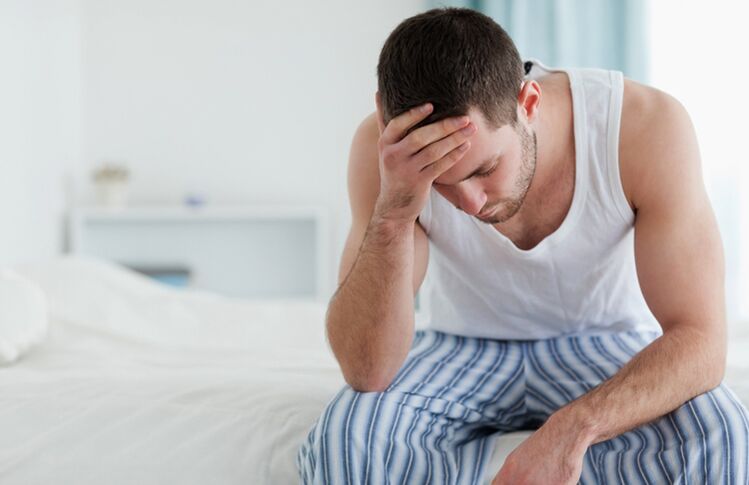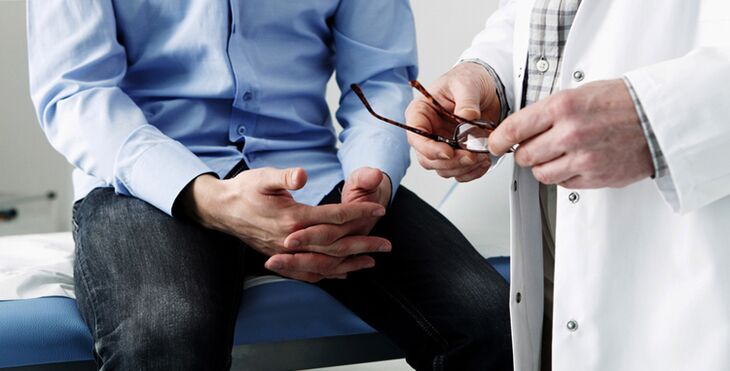The prostate is a gland in the male body. The normal parameters of a healthy organ are 2. 5-4. 5 cm long and 3-4 cm wide. It consists of glandular and muscular tissues and is formed until the age of 23, when the accumulation of hormones increases. The glandular or secretory tissue produces a special fluid (secretion) that is released during ejaculation and is a component of the seminal fluid.
The prostate secretion has an alkaline reaction and ensures the vital activity and mobility of spermatozoa, protecting them from the acidic environment of the vagina.
What is prostatitis
It is an inflammation of the prostate gland that occurs only in the male body and is involved in the production of the male sex hormone. Ligaments connect the gland to the pubic junction between the bones, its base approaches the bladder and surrounds the beginning of the urethra.
Located in the pelvis, the prostate is separated from the rectum by a thin septum of connective tissue. This anatomical location of the prostate explains the complaints that occur when it is inflamed and enlarged. The gland compresses the urethra, thus causing poor urine flow.
Rectal pressure causes constipation. The location in close proximity to the perineum causes pain in this area.
Acute and chronic prostatitis are distinguished.
Acute prostatitiscan be caused by different bacteria:
- E. coli.
- Staphylococcus aureus.
- Enterococci.
- Pseudomonas aeruginosa.
- Enterobacteriaceae.
The presence of these pathogens in the body of a healthy person is natural and not harmful. But with a decrease in immunity, bacteria are activated, penetrate the tissues of the gland and cause acute inflammatory processes, manifesting as:
- Increase in temperature, both of the whole body and rectally (in the rectum). In addition, the rectal temperature is often higher than in the axillary region.
- Complaints of chills, fever.
- The appearance of pain in the groin, scrotum, anus.
- Frequent painful (spasms, burning) urination. The calls become more frequent at night.
- General intoxication. Weakness, muscle and joint pain, headache.
- Change in urine color. It becomes turbid, sometimes with an admixture of blood.
- Discharge from the urethra.

A slow or advanced acute process that lasts more than 3 months leads tochronic form.It is characterized by:
- Pain in the genital area.
- Disruption of urination.
- Sexual disorders.
Main reasons
- Urinary tract infections. They can go unnoticed for a long time. The normal microflora of the genitourinary system copes with the pathogenic flora for some time. But as a result of hypothermia or other unfavorable conditions, the aggressive microflora begins to prevail and inflammation begins.
- congestion in the prostateis a significant risk factor. A sedentary lifestyle, hemorrhoids, constipation - these factors lead to blood stagnation. Updated, oxygenated arterial blood practically stops flowing in the pelvic organs. Intracellular respiration decreases and the infection becomes the sovereign mistress.
- Irregular sex life, - when periods of increased sexual activity are replaced by prolonged abstinence. Frequent ejaculations, as well as their restriction, lead to stress and dysfunction of the secretory function. Together with the above reasons, this gives the conditions for starting the inflammatory process.
- obesity. The metabolism is disturbed, which leads to atherosclerosis and deposition of cholesterol.
- hypothermiacan lead to a decrease in immunity.
- Abuse of alcohol and tobaccoleads to narrowing of the large vessels that feed the prostate.
- Lack of physical activitydoes not allow the muscles of the prostate gland to work and completely expel the secret.
The first signs of prostatitis in men
- A weak stream of urine with a small range.
- Difficult urination with pain.
- Interrupted stream.
- Prolonged process of urination.
- Incomplete emptying of the bladder.
- Frequent night talks.
Symptoms and signs
There are two phases of symptoms: latent (hidden) and active. In the latent phase, which can last for years, there are almost no complaints. There is a slight feeling of discomfort in the scrotum, anus or glans penis.
Men try to ignore it or write it off as overwork. Over time, the pain intensifies, emptying the bladder becomes more and more difficult. This indicates that the latent phase has become active, inflammation has begun to progress, and obvious signs of the disease have appeared:
- Unpleasant sensations during the act of defecation.
- Fibrous discharge from urethra during stool.
- Burning in perineum and urethra.
- Noticeable potency issues.
- Rapid ejaculation.
- The bladder empties partially and with difficulty.
- Problems of a psychological nature.
- Urination is frequent and painful with stringy discharge.
- The process of getting an erection takes a long time.
Diagnosis
- History taking. The doctor discovers all the complaints that the patient makes. Time of first symptoms. The presence of other diseases. It detects details about sexual activity, the presence of a permanent partner and other information necessary for an accurate diagnosis.
- Rectal examination of the prostate. Before the examination, the patient is given a microclyster to cleanse the intestines. Palpation examination allows you to determine the increase and soreness of the organ. As a result of prostate massage, part of the secretion is released, which is sent to the laboratory for examination. The result allows you to determine the microflora of the gland and the sensitivity of pathogenic microorganisms to drugs.
- ultrasound. This examination determines the size of the prostate gland, its density and structure. A transrectal ultrasound is used for a more detailed examination. The tip of the device is inserted into the rectum, which makes it possible to check part of the intestines and seminal ducts.
- Cystoscopy. The procedure is performed using an endoscope. A thin probe with a camera is inserted into the urethra, which allows the bladder and gland to be seen on the screen. If indicated, they may take a biopsy (tissue sample for analysis).

Laboratory tests are also performed:
- General blood test (increased number of leukocytes).
- Urinalysis (in the samples there are leukocytes, erythrocytes and protein).
- Bakposev on the microflora is taken from the urethra (the sensitivity to antibiotics is determined).
- Sperm analysis (motility, activity and accumulation of spermatozoa, state of reproductive function).
Methods and schemes for the treatment of prostatitis
The treatment is complex. It includes preparations with different directions and actions, plus massage, physiotherapy and therapeutic gymnastics.
Prescribed medications:
- Broad-spectrum antibiotics (affect pathogenic microflora).
- Alpha-blockers normalize urine output, improve blood supply to the pelvic organs and reduce pain.
- Muscle relaxants.
Treatment also includes:
- Prostate massage (helps to eliminate fluid retention and swelling). Acute infectious prostatitis is a contraindication for the procedure.
- Physiotherapy (electrophoresis, electrostimulation, magnetic and laser therapy).
- Physiotherapy.
Only a doctor can prescribe drugs after receiving these tests!
Prevention
- To prevent prostatitis, it is recommended to lead a mobile lifestyle. Walking, running, swimming, tennis are good for health. Power sports and cycling should be limited.
- Diets. Eating foods high in vitamins and minerals. Do not abuse alcohol and nicotine, limit the consumption of pickles and smoked meats.
- Be careful when choosing a sexual partner to avoid sexually transmitted infections.
- Regular sex life.
Following these simple preventive measures will allow you to maintain your health for many years.























